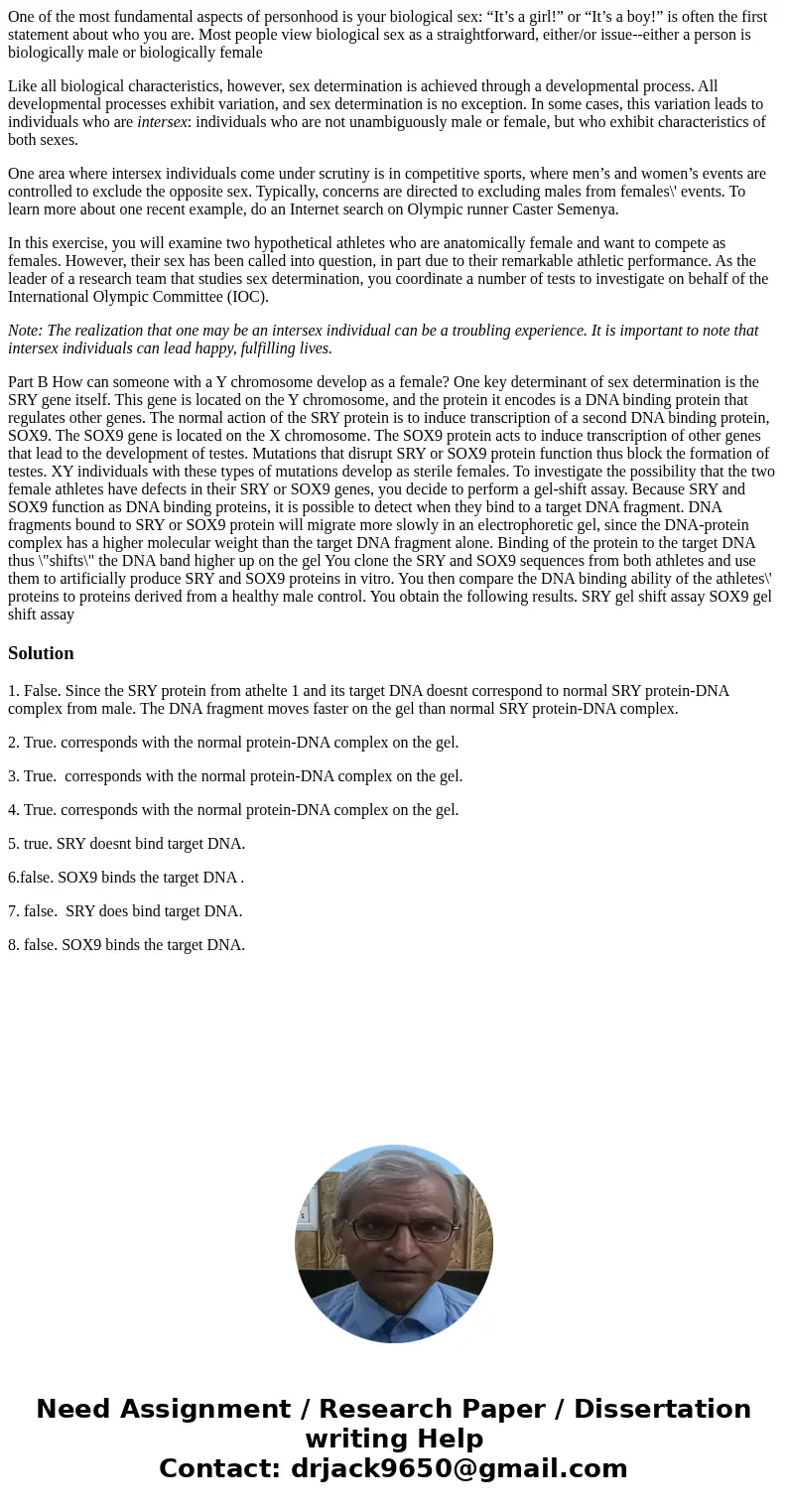One of the most fundamental aspects of personhood is your bi
One of the most fundamental aspects of personhood is your biological sex: “It’s a girl!” or “It’s a boy!” is often the first statement about who you are. Most people view biological sex as a straightforward, either/or issue--either a person is biologically male or biologically female
Like all biological characteristics, however, sex determination is achieved through a developmental process. All developmental processes exhibit variation, and sex determination is no exception. In some cases, this variation leads to individuals who are intersex: individuals who are not unambiguously male or female, but who exhibit characteristics of both sexes.
One area where intersex individuals come under scrutiny is in competitive sports, where men’s and women’s events are controlled to exclude the opposite sex. Typically, concerns are directed to excluding males from females\' events. To learn more about one recent example, do an Internet search on Olympic runner Caster Semenya.
In this exercise, you will examine two hypothetical athletes who are anatomically female and want to compete as females. However, their sex has been called into question, in part due to their remarkable athletic performance. As the leader of a research team that studies sex determination, you coordinate a number of tests to investigate on behalf of the International Olympic Committee (IOC).
Note: The realization that one may be an intersex individual can be a troubling experience. It is important to note that intersex individuals can lead happy, fulfilling lives.
Part B How can someone with a Y chromosome develop as a female? One key determinant of sex determination is the SRY gene itself. This gene is located on the Y chromosome, and the protein it encodes is a DNA binding protein that regulates other genes. The normal action of the SRY protein is to induce transcription of a second DNA binding protein, SOX9. The SOX9 gene is located on the X chromosome. The SOX9 protein acts to induce transcription of other genes that lead to the development of testes. Mutations that disrupt SRY or SOX9 protein function thus block the formation of testes. XY individuals with these types of mutations develop as sterile females. To investigate the possibility that the two female athletes have defects in their SRY or SOX9 genes, you decide to perform a gel-shift assay. Because SRY and SOX9 function as DNA binding proteins, it is possible to detect when they bind to a target DNA fragment. DNA fragments bound to SRY or SOX9 protein will migrate more slowly in an electrophoretic gel, since the DNA-protein complex has a higher molecular weight than the target DNA fragment alone. Binding of the protein to the target DNA thus \"shifts\" the DNA band higher up on the gel You clone the SRY and SOX9 sequences from both athletes and use them to artificially produce SRY and SOX9 proteins in vitro. You then compare the DNA binding ability of the athletes\' proteins to proteins derived from a healthy male control. You obtain the following results. SRY gel shift assay SOX9 gel shift assaySolution
1. False. Since the SRY protein from athelte 1 and its target DNA doesnt correspond to normal SRY protein-DNA complex from male. The DNA fragment moves faster on the gel than normal SRY protein-DNA complex.
2. True. corresponds with the normal protein-DNA complex on the gel.
3. True. corresponds with the normal protein-DNA complex on the gel.
4. True. corresponds with the normal protein-DNA complex on the gel.
5. true. SRY doesnt bind target DNA.
6.false. SOX9 binds the target DNA .
7. false. SRY does bind target DNA.
8. false. SOX9 binds the target DNA.

 Homework Sourse
Homework Sourse